July 18, 2003
Air Date: July 18, 2003
FULL SHOW
SEGMENTS
L.A. Retro
View the page for this story
After years of progress in battling pollution, Los Angeles is experiencing its worst air quality in half a decade. Host Laura Knoy discusses this retro development with Los Angeles Times reporter Gary Polakovic. (06:00)
Fire Toads
/ Sandy HausmanView the page for this story
Two years ago, a lightning strike set off a wildfire that swept through thousands of acres in Montana, and destroyed nearly a third of the landscape in Glacier National Park. But as Sandy Hausman reports, the fire may have helped out one little forest dweller. (05:00)
Environmental Health Note/Can You Hear Me Now?
/ Diane ToomeyView the page for this story
Living on Earth’s Diane Toomey reports on a study on the effects of cell phone radiation on the brain. (01:15)
Almanac/Timber!
View the page for this story
This week, we have facts about the 44th World Lumberjack Championships. More than 200 contestants converge on Hayward, Wisconsin to claim the coveted logrolling honors. (01:30)
Eco-village, Indian Style
/ Andrew BlackwellView the page for this story
Thirty years ago, a spiritual community was created in southern India. Auroville, as the community is known, devotes itself to peace and has become a model city for sustainable living. Andrew Blackwell reports. (08:45)
Lewis & Clark Trail
/ Barrett GoldingView the page for this story
Thousands of Americans are visiting spots along the Lewis and Clark trail this summer in honor of the 200th anniversary of the exploration. Producer Barrett Golding bicycled the length of the trail, and created a series of audio postcards. (03:30)
Better Safe Than Sorry
/ Mark HertsgaardView the page for this story
In San Francisco, vendors and manufacturers must now show their products are environmentally safe before they sell them to the city. Commentator Mark Hertsgaard says the city's adoption of the "precautionary principle" is a big deal. (03:00)
Emerging Science Note/Herbs Under Wraps
/ Cynthia GraberView the page for this story
Living on Earth’s Cynthia Graber reports that basil-infused plastic wrap might help keep food fresh longer. (01:15)
Sound-off on Sonar
View the page for this story
Three years ago, whales and dolphins beached themselves on the coast of the Bahamas. The U.S. Navy later acknowledged that its use of a powerful sonar system damaged the mammals’ auditory systems, which may have caused the beachings. Ken Balcomb is a whale researcher and a former naval officer who’s been campaigning to end sonar testing in marine mammal habitat. Host Laura Knoy speaks with him from his oceanfront headquarters on San Juan Island. (07:00)
Inter-species Linguistics
/ Amy CoombsView the page for this story
The search for intelligent life has extended as far as the outer fringes of the universe. And according to one extra terrestrial researcher, understanding dolphin language can help develop better inter-species communication. Producer Amy Coombs reports. (08:30)
This week's EarthEar selection
listen /
download
Show Credits and Funders
This Week's Music
Show Transcript
HOST: Laura KnoyGUESTS: Ken Balcomb, Gary PolakovicREPORTERS: Sandy Hausman, Andrew Blackwell, Amy CoombsCOMMENTARY: Mark HertsgaardNOTES: Diane Toomey, Cynthia Graber
[THEME MUSIC]
KNOY: From NPR, this is Living on Earth.
[THEME MUSIC]
KNOY: I’m Laura Knoy. Air quality in Los Angeles goes from bad to good to bad again. We’ll look at what’s fueling the latest version of the L.A. haze. Also, one man’s mission to restrict the places where the U.S. Navy conducts sonar testing. He says the signals are driving whales crazy. And dolphin talk—new evidence that these marine mammals have language skills comparable to humans.
DOYLE: Clearly, we have underestimated their intelligence. Is that enough to save dolphins - that they actually talk to each other with meaning and syntax? I’d say that’s enough to take a few steps back and reconsider the animal community and the degree of intelligence they actually have.
[DOLPHIN WHISTLE]
KNOY: When dolphins speak and more, this week on Living on Earth, right after this.
[NPR NEWSCAST]
L.A. Retro
ANNOUNCER: Support for Living on Earth comes from the National Science Foundation and Stonyfield Farm.
[THEME MUSIC]
KNOY: Welcome to Living on Earth. I’m Laura Knoy, sitting in for Steve Curwood.
It used to be that air quality in the Los Angeles area was the butt of jokes on late night talk shows, and the bane of folks with respiratory problems. But thanks to tougher state emissions controls, the skies over L.A. cleared and the air quality steadily improved. Up until now, that is. This year, Los Angelenos experienced the worst air since 1998. The mixture of heat and pollution got so bad this month that the city was under a stage one smog alert, the first in five years. Gary Polakovic has been covering this retro trend for the Los Angeles Times. He says these stage one days can hurt people spending time outdoors.
POLAKOVIC: When we have stage 1 episodes—and they have been rare until this year—it means that the ozone concentration in the air has reached a level that is considered very unhealthy for everybody. So if you’re going to do any kind of strenuous outside activity like mow the lawn, go for a jog, play tennis, something like that—you are almost guaranteed that you are going to have some kind of adverse health problem, like shortness of breath, or headaches, or nausea, something along those lines.
KNOY: Wow. You know, Gary, I thought that Los Angeles was the poster child for a city that was cleaning up its air pollution. It had dropped to second place behind Houston, and, as I understand, was even supposed to drop to third, so what happened?
POLAKOVIC: Yes, how we wish we could have those times back. Those were sort of the halcyon times, those were great. What’s happened is growth. We have ten million cars, 16 million people in this basin, and at least 30,000 businesses. We have major ports, gigantic airports, I mean, you name it, and there’s pollution sources here for it. What you have is a situation where, given all that growth, unless the regulators cut emissions at almost a sprint kind of a pace, growth can quickly snowball and overtake it. And that’s a big part of what’s been happening lately.
KNOY: What has the state and local air quality management officials been doing to deal with the problem, say in the last five years, since you said that’s when it’s been getting worse?
POLAKOVIC: The real irony here is that California has always had very stringent environmental controls. We have the cleanest cars in this state, we drive the cleanest gasoline, we’ve got many of the cleanest factories you’ll find in the country, we have some of the cleanest power plants. So there have really been very few stones left unturned in trying to reduce emissions. But the problem is many of the big bites that helped drive ozone down from the bad old days, the way it used to be, many of the technologies that came online to achieve those gains have sort of played themselves out. And yet we’re still a long way from having anything we could call healthful air.
One of the strange things about the smog situation in L.A. is how much of the emissions problem is, for the most part, largely out of the control of authorities in L.A. And by that I mean the bulk of the emissions, the overwhelming majority, are coming from vehicle tailpipes. And on top of that, we have these large sources, these so-called federal sources, that are largely under the jurisdiction of the EPA. And those things include, like, the harbors in the Los Angeles area. We have one of the busiest harbors in the world here. It’s a major pollution source. We have five major airports, including LAX, in the region. Those are all major pollution sources. And you’ve got locomotives, you’ve got interstate trucking. All of these things are very, very big polluters.
KNOY: So, what could the federal government be doing to help Los Angeles clean up its air?
POLAKOVIC: One thing that would have been really helpful, had the federal government done so, would have been to seek more stringent regulations on these giant ocean-going ships we have up and down the coast. Now, just recently, the Bush administration opted to not impose more stringent regulations on those ships. Yet, to give you some idea of the magnitude of ship emissions, in the Los Angeles harbor area, one of the busiest ports in the nation, we have seen so much growth in shipping and commerce due to globalization and free trade agreements and things like that, that just those big ship emissions now, everyday, produce almost the amount of smog-forming emissions as a million cars. There are places along the California coast, like Santa Barbara and others, that are warning that unless these ship emissions are controlled—these are clean air places—they are going to become dirty air places because there is just too much boat emissions out there. We need to see similar efforts on aircraft, and aircraft support equipment, like the little luggage carriers and trolleys and things like that at airports. You need to see things on railroads. The heavy duty diesel trucks in particular, these big smoke-belching trucks often are interstate commerce sorts of issues. They need to be addressed, in no small measure, at the federal level also.
KNOY: What’s the outlook, Gary, for smog over the next couple months? You know, it’s just July.
POLAKOVIC: It would be so great if I could sit here and tell you that we’re just having a really bad hot spell right now, and it’s going to sort of clear up, and we’re going to end the year on a pretty positive note. But I don’t know anybody who believes that. In fact, what we’ve seen historically in the Los Angeles region over many, many years, is that our worst ozone actually occurs in late August, early September. That’s when the air is really, really stagnant. The sea breezes drop off as we head toward fall. And that’s when we see ozone really, really take off. And we’ve got that bout awaiting us. So nobody is predicting that this season is going to be anywhere near a clean air year
KNOY: Gary Polokivic is a reporter with The Los Angeles Times. Gary, thanks for talking with me.
POLAKOVIC: You’re welcome.
Fire Toads
KNOY: It started as a lightning strike near Whitefish Divide, but by the time it was finally contained a month later, a huge wildfire had destroyed more than 70,000 acres of forest land in Montana - nearly a third of it in Glacier National Park. Two years since that fire charred the landscape, the forest is showing dramatic signs of recovery. And, as Sandy Hausman reports, experts even think the blaze may have helped out one of the park's smaller residents.
[CONSTRUCTION SOUNDS]
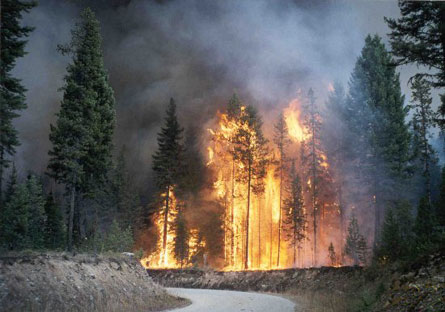
The 2001 Moose Fire that burned Glacier National Park and aided the toad resurgence.
(Photo: National Park Service/US Forest Service)
HAUSMAN: Stan Star works for Glacier National Park – grading and plowing the roads. After forest fires, he has seen the thin black stalks that remain where wide tree trunks once stood. Each time, he has marveled as nature began its comeback with wildflowers, grasses and saplings crowding the forest floor. But nothing has surprised him quite so much as the revival of a rare woodland creature.
STAR: I was grading the road through the inside from Logging to Dutch Creek. And as I proceeded through this area I noticed the ground started to move and jump and hop and so I thought, “Oh, I'm hallucinating!” I've seen a lot of weird and strange things but that was one of the stranger ones.
[CELL PHONE RING]
HAUSMAN: After a closer look, Star got on his cell phone to report that thousands of tiny toads – about the size of a thumbnail – were making their way from ponds in Sullivan Meadow, across the road, into the forest where they would spend the winter under tree stumps, in root channels or rodent burrows.
CORN: There are some species of frogs in North America that actually freeze solid over the winter, but toads don't do that, so they have to find a place where they're not gonna dry out and where they're not gonna freeze.
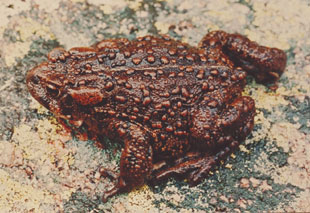 Boreal toad (Photo: Stephen Corn, Courtesy of USGS)
HAUSMAN: Steve Corn is a zoologist with the U.S. Geological Survey in Missoula, Montana. He got three calls that day from excited park scientists who said the tiny amphibians were boreal toads. Before the fire, survey teams found this creature in less than five percent of a thousand wetlands at Glacier. They weren’t sure why the numbers were so low, but now these toads were so numerous that park officials decided to close the road. Boreal toad (Photo: Stephen Corn, Courtesy of USGS)
HAUSMAN: Steve Corn is a zoologist with the U.S. Geological Survey in Missoula, Montana. He got three calls that day from excited park scientists who said the tiny amphibians were boreal toads. Before the fire, survey teams found this creature in less than five percent of a thousand wetlands at Glacier. They weren’t sure why the numbers were so low, but now these toads were so numerous that park officials decided to close the road.
CORN: I was quite excited about it. It was really fun to get some good news for a change. Here's a population that's doing so well that we have to close a road. That's been pretty rare in the west in the last decade or so. HAUSMAN: After the initial excitement, Corn began to wonder where these toads had come from and why they had appeared now. He theorized that like some plants that need fire to reproduce, some animals might also benefit from a blaze. CORN: The length of time they spend as eggs and tadpoles is hugely dependent on water temperature. The boreal toads lay their eggs in the shallowest water they can find, typically. The warmer they are, the faster they develop. And the sooner they get out, the better they are able to survive the winter, because if they can put on a little weight, they'll likely survive a little better over winter. HAUSMAN: Corn's colleague Blake Hossack says the fire cleared the forest canopy and made way for sunlight. Hossack: Really cleaned it out. It used to be pretty unpleasant to bushwhack through this area, and now it's very easy. HAUSMAN: He and other scientists reason that the warmer woodland ponds are a better place for tadpoles, and they're relieved that the Park Service agreed to keep traffic away – further improving the odds for survival. Frankly, Hossack didn't expect such consideration. Hossack: Amphibians tend not to be the highest priority species in the Northern Rockies. Popularity has gained in part, I think, due to beer commercials. HAUSMAN: Not only have amphibians proven effective in selling Budweiser beer on TV, Corn says they play a critical role in a woodland ecosystem. In the California Sierras, for example, a decline in the toad population could explain a decrease in the number of snakes that feed on toads and, in turn, a drop in the population of hawks and owls that feed on snakes. He believes the revival of boreal toads in Montana may support the argument already advanced by many – that total suppression of fires does not serve the long-term needs of forest plants and animals. CORN: It's more evidence that re-establishing a more natural fire regime in these forests will benefit the ecosystem as a whole. HAUSMAN: If the canopy is burned away from time to time, he says the boreal toad could make an even more significant comeback, with a single female laying up to 20,000 eggs each year. That means Stan Star could be witnessing another moving road this summer. And when last year's crop of toadlets reaches maturity in 2005, visitors could be hearing something missing from Glacier for years. [BOREAL TOAD CALLS] HAUSMAN: Crowds of breeding boreal males calling softly to define and defend their turf. For Living on Earth, I’m Sandy Hausman in Glacier National Park. [MUSIC: Rob Ickes “Dwight’s Blues” Slide City Rounder (1999)]
Environmental Health Note/Can You Hear Me Now?KNOY: Just ahead: a ray of light shines through years of environmental neglect at the tip of the Indian sub-continent. We visit a place called Auroville. First, this Environmental Health Note from Diane Toomey. [HEALTH NOTE THEME] TOOMEY: Most research on cell phone usage has focused on a possible connection between radiation emitted by phones and cancer. And those studies have found no link. But a Swedish research team recently looked for a different effect. They already had shown in previous studies that cell phone radiation weakens the protective layer of cells between the brain and bloodstream in rats. They also knew that the protein albumin could leak through this protective barrier. The researchers wanted to find out if this albumin leakage was damaging. So they exposed rats to radiation generated by a type of mobile phone commonly used in Europe. The rats were divided into three groups and exposed to different doses of radiation, all comparable to what a human might receive using a cell phone for two hours. Another group of rats received no radiation. As expected, the exposed rats' brains showed signs of albumin accumulation. But these new tests also showed signs of significant damage to neurons throughout the brain. What's more, the higher the dose of radiation, the greater the neuron damage. The researchers admit this was a small study, but say it may point to long term effects from frequent exposure to cell phone radiation. That’s this week’s Health Note. I’m Diane Toomey. KNOY: And you're listening to NPR’s Living on Earth. [MUSIC: Underworld “Air Towel” Second Toughest in the Infants TVT (1996)]
Almanac/Timber!KNOY: Welcome back to Living on Earth. I’m Laura Knoy. [CHAINSAW AND TREE-FALLING, SHOUTING] [MUSIC: Jorma Kaukonen “Just Because” Blue Country Heart Sony (2002)] KNOY: Yo-hooooo! Pole out! Check it down! Time in! That’s a quickwhistle. These are just some of the pithy phrases you might hear called out at the logrolling contest during the 44th annual World Lumberjack Championships to be held this coming week in Hayward, Wisconsin. More than 200 competitors, both amateur and professional, travel from places like New Zealand, Australia and Canada to compete against some of the best lumberjacks in the States. The competition commemorates the long history of logging in the northwest and features ax-throwing, pole-climbing, boom running and logrolling. Boom running and logrolling are sports that developed from the often dangerous practice of guiding cut timber from the woods down river to the sawmills. This practice, called “river driving,” gave lumberjacks nothing but spiked shoes called caulks, and a long, metal rod called a pike pole to keep their balance and steer the logs through the treacherous waters. Though river drivers and lumberjacks are male-dominated professions, the women’s lumberjack (or lumberjill) competition has drawn some of the biggest crowds at the World Championships. Here, women compete in single-buck sawing, the underhand block chop—and occasionally, one or two will climb the ninety-foot poles shipped in from west coast forests. So strap on your caulks, grab your pike pole, and head out to Hayward to watch these burly men and women compete for the $50,000 grand prize and title of world-champion lumberjack. And for this week, that’s the Living on Earth Almanac. Related link:
Eco-village, Indian StyleKNOY: In India, the state of Tamil Nadu sits at the southern end of the country where the Bay of Bengal, the Indian Ocean, and the Arabian Sea meet. It’s home to more than 60 million people and a thriving language and culture all its own. In the past two centuries, Tamil Nadu underwent intensive logging and overgrazing. Some lowlands along the Bay of Bengal were reduced from dense forest to virtual desert. With no forest to hold the soil, monsoon rains eroded deep gullies through the landscape, and by the mid-twentieth century, parts of Tamil Nadu were in danger of becoming uninhabitable. But despite these ecological challenges, a 30 year old spiritual community known as Auroville has thrived and become a model for sustainable living. Andrew Blackwell reports. [SOUNDS OF WALKING IN FOREST] BLACKWELL: Rita de Souza Zachaux walks through the front yard of her thatch-roofed house. It’s not so much a yard as a thick grove of trees, carpeted with tall, dry grass. This forest is especially important to her. After all, she planted it herself. ZACHAUX: Let me show you my pride of trees. These are older, maybe 10 years old, and these are about four years old. And all the tall, shade-giving trees are from the earlier, pioneering years. [FOREST SOUNDS] BLACKWELL: The “pioneering years” that Rita refers to date back to the late 1960s. It was then that Auroville was founded by a French-born spiritual leader known as “The Mother,” and dedicated to the ideals of the late Indian philosopher Sri Aurobindo. The Mother laid out guidelines for a model city that would foster what she called “human unity.” Auroville, she said, would be a place where people could live as citizens of the world, devoting themselves both spiritually and materially to the goals of peace and international understanding. But when the first Aurovillians arrived on their site a few miles north of the city of Pondicherry, they found a bleak expanse of baked, lifeless clay. As a matter of survival, says Rita, forestry became a way of life. ZACHAUX: It was some neem trees and palmyra trees, and it was not possible to take any walk in the sun until five o’clock on the land. Just scorching sun. So, we dug pits and we planted seedlings, saplings, and we watered them and we watched them, and it went on every year more and more, and then, okay, trees started growing… BLACKWELL: After 30 years of hard work, the result is almost miraculous. Over two million saplings have been planted, and the landscape is lush with trees and other vegetation. Not only do the trees provide shade, but they keep moisture in the soil and prevent erosion. Interrupted only by a network of dusty dirt roads and outcroppings of houses and community buildings, forest now blankets Auroville’s nearly 5,000 acres. Indigenous wildlife that had long since left the area has returned. And the Aurovillians have also been able to do something they would never have been able to do otherwise. They’ve been farming. [SOUND OF CUTTING PLANTS]
|

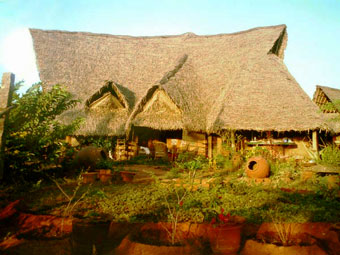 The main building at the Windarra farm in Auroville. (Photo: Anamaria Aristizabal)
The main building at the Windarra farm in Auroville. (Photo: Anamaria Aristizabal) 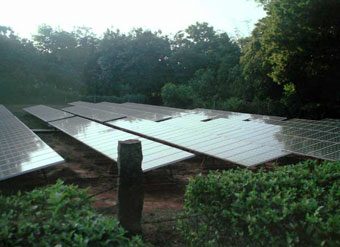 Solar panels provide energy for most of the buildings in Auroville. (Photo: Anamaria Aristizabal)
BLACKWELL: For Rita, the wonderful work has less to do with eco-friendly technology or governmental vision, than with the satisfaction of taking an active part in preserving one’s ecosystem.
Solar panels provide energy for most of the buildings in Auroville. (Photo: Anamaria Aristizabal)
BLACKWELL: For Rita, the wonderful work has less to do with eco-friendly technology or governmental vision, than with the satisfaction of taking an active part in preserving one’s ecosystem.
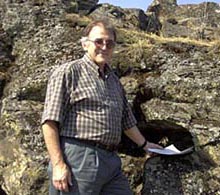 (Photo: Josef Verbanac)
KNOY: Like this one of archeologist Ken Karzmiski, who collects evidence from the Captains’ campsites in central Oregon. Ken Karzmiski works at the Discovery Center, near the Dalles Dam in central Washington. Interstate 84 is on one side, a railroad is on the other, and in between lie thousands of lost historical artifacts.
(Photo: Josef Verbanac)
KNOY: Like this one of archeologist Ken Karzmiski, who collects evidence from the Captains’ campsites in central Oregon. Ken Karzmiski works at the Discovery Center, near the Dalles Dam in central Washington. Interstate 84 is on one side, a railroad is on the other, and in between lie thousands of lost historical artifacts.
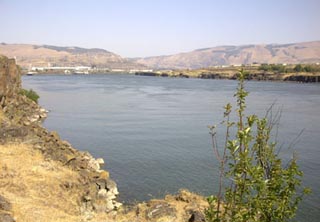 (Photo: Josef Verbanac)
(Photo: Josef Verbanac) 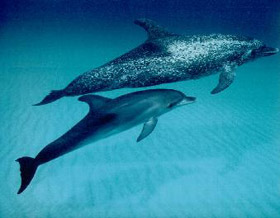 (Photo: South Florida Water Management District)
(Photo: South Florida Water Management District) 





